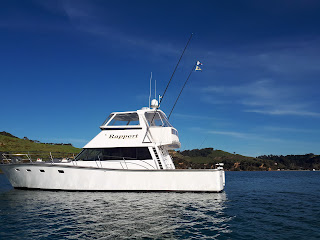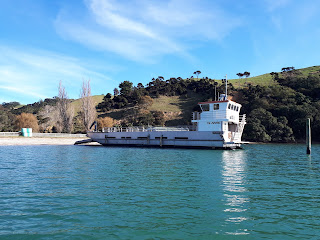Ourlast posting detailed how cruising at around displacement speed dramatically decreases fuel consumption and increases cruising range. It also highlighted the problems which can be encountered through cruising consistently at low rpm. Running diesel engines for long periods at idling speed is particularly detrimental and engine “wear” is said to occur at about double the ratecompared to running them under normal loading. Ideally for that reason engines should only have 3-5 minutes of idling followingstart up and then be brought up to around 1,200 rpm withsome load applied.
Not only can idling cause a build-up of carbon in the engine but also causes mirror glazing, which is the creation of a mirror-like surface finish on cylinder bores, eventually allowing more oil to pass the rings and creating more blow-by (the adverse effects of which were detailed in Part 1 of this article). Mirror glazing can also be caused by constantly running engines at the same rpm, so this should be avoided. Before shut down a diesel should also be idled for 3-5 minutes to allow the turbo to cool down. In practice this is catered for when entering your marina or approaching your anchorage.
Now let’s consider someoptions for low speed cruisingand their relative merits.
Option 1 – run both engines at low rpm
If you’re wanting to do this, avoid running below 1,200 rpm andit’s recommended to at least run at 60-75 per centof WOTfor about 30 minutes after reaching full operating temperature, then again for about15 minutes every 4 hours and then for about 30 minutes about 1 hour before shutdown. This last one is considered to be especially important to reduce soot formation and to clean the turbocharger andit’s better to spend less than optimal time at higher rpm than none at all.
Pros
There will be a considerable reduction in fuel usage and increase in range.
All ancillary equipment driven by the engines such as power steering, refrigeration compressors, hot water manifolds will operate (unlike Option 2).
Both gearboxes and drive trains will be cooled (unlike Option 2).
Full maneuverability is maintained and there is no rudder bias (unlike Option 2).
There is no potential problem with prop shaft couplings (unlike Option 2).
In practical terms this option is easy to manage.
Cons
Somemonitoring and planning is required for the periods at higher rpm and it is difficult to achieve on short cruises.
May cause issues with alternators.
Hours-based service costs may increase because you are using more engine hours to run a given distance.
Option 2 – run on one engine at a time at higher rpm
Underthis system only one engine is used at a time, alternatingperiodically(eg every one to two hours).
Pros
It will take more rpm on the one selectedengine to reach your chosenspeed than it would be using two, therebyeliminatingor at least minimisingthe problem of light loading.
Fuel saving and range increase will be considerably less than Option 1, but still in the order of 10 to 15 per cent.
Higher rpm will make your in-use alternator run more efficiently.
The process is relatively east to manage.
The frequency of hours-based engine servicing is reduced thus saving service costs.
Cons
Maneuverability is considerably reduced using one engine, particularly at low speedso this option should only be considered in open waters and not for example coming into or out of marinas.
There will be a slight steering bias in the direction away from the in-use engine ie using only the port engine the vessel will veer slightlytowardsstarboard.
The not-in-use engine’s prop will still turn or “windmill” causing drag and the gearbox to operate.The inactive engine’s gearboxmust be kept in neutral so that the engine doesn’t turn over. Most gearboxes are water-cooled using its engine’s heat exchanger, so without the engine running this cooling will be lost and gearbox damage can potentially occur. Consult your installations Owners’ Manual to ascertain for how long you can windmill. They normally suggest running your engine for about five minutes before wind milling and will advise the allowed time interval before it needs to be started again to activate the heat exchanger and circulate gearbox oil. My Caterpillar manual recommends idlingthe engine every 12 hours for five minutes, however the Twin Disc gearbox manual recommends idling the engine for a few minutes every hour, so I willfollow that guideline.
If initiating this procedure it would be a good idea to check the temperature atthe rear of the wind milling prop’s gearbox using an infra-red thermometer to see how long it takes for the temperature to rise. The lower the boat speed, the less the wind milling engine’s gearbox temperature will rise. Bear in mind there’s a good chance that some time in the future you’ll have a problem with one engine and need to run just on the other one, so this is not a wasted exercise.
Take into account that engines often run ancillary equipment, for example Rapport’s port engine runs our refrigeration compressor while her starboard engine runs our power steering and heats our hot water supply.
Some stuffing boxes have no cooling system beyond the sea water coming into it, others have oil or grease lubrication to keep temperatures down, while others and more particularly most dripless shaft seals are cooled with sea water supplied from the engine’s sea water pump, so for this latter category no cooling will be supplied if the engine is not running.
Note that some vessels have a system where either engine can supply cooling water to both shafts. However if this is not the case it is best to comparethe temperaturesof the not-in-use shaft seals with the in-use shaft seals using an infra red thermometer to determine for how long you can allow wind milling. A temperature up to about 40dC should be OK, in fact as a general rule mechanics say if the stuffing box is nottoo hot to touch it’s OK (be careful doing this though). Another measure is that stuffing box temperature should be 7-22dC above sea water temperature.
Note that some cruisers have adopted measures to eliminate wind milling. At an extreme level one cruiser crossing the Pacific decided to remove oneprop until half way across, then replacethe prop and removethe other one so the in-use engine could be changed. This was done at sea using a block and tackle to support the prop’s weight. At a less extreme level it’s not uncommon for long distance cruisers to install a mechanical or hydraulic system enabling either prop shaft to be locked so it cannot rotate. I have discounted the use of such a system based on the inconvenience and practicalityof changing over engines and the compromise to maneuverability in the event of an emergency.
When an engine is driving your vessel it is trying to push the prop shaft and coupling flangetowards the engine, therefore not putting any load on the securing bolts. When the prop shaft’s wind milling it’strying to pull away fromthe engine and therefore your coupling flange, soconnections should be checked initially and at regular intervals thereafter.
Option 3 – run both engines with one engine at higher rpm than the other
Another option isto run one engine at high rpm and the other at low rpmso that all engine-driven equipment is operating, then interchange every couple of hours or so. If adopting this option avoid running the low rpm engine below1,200 rpm for the reasons outlined in the opening comments.
Pros
The issue of light loading is eliminated.
Economy gains similar to running two engines at low rpm are achieved and range is increased.
There is littleloss of maneuverability.
There is no issue with cooling of gearboxes and shaft seals.
There is no issue with prop shaft flange connections.
The process is easy to manage.
All engine-driven ancillary equipment will operate.
Cons
Both engines are stillrampingup engine hours, so no servicing costs are saved.
There will be a very slight steering bias in the direction away from engine operating at higher rpm.
The alternator’s efficiency is compromised for the engine running at low rpm.
Conclusion
As mentioned early on Di and I prefer to cruise much of the time off the plane, even when cruising long distances,so considering all of the above options here’s a practical solution based on Option 2 for Rapport.
-Start both engines and leave the marina using bothat low rpm (although preferably above 1,200 rpm wherever possible)providingmaximum maneuverability.
-When in openwatersshut down the starboard engine and as temperatures rise, gradually increase rpm on port to about 1,850 = 66 per cent of WOT. This will operate refrigeration and efficient alternator operation and battery charging at higher rpm. The power steering willnot operateso hand steering will be necessary, however this is not much of an issue in open waters. Any time that power steering and autopilot is wanted I can start the starboard engine.
-When the freezer reaches its operating temperature (after roughly three hours on first day outand on subsequent daysafter about an hour), runthe starboard engine at about 1,850 rpm and shut down port
–Then continue to alternate engines as required about hourly.
For subsequent days wenormally use the genset every morning so the batteries are fully charged at that time and the alternators don’t need to run at high outputs. Every several engine hours I’ll run both engines at about 2,200-2,400rpm for 15 minutes or so as well as doing this for about half an hour an hour before shutdown.
Happy Slow Cruising





